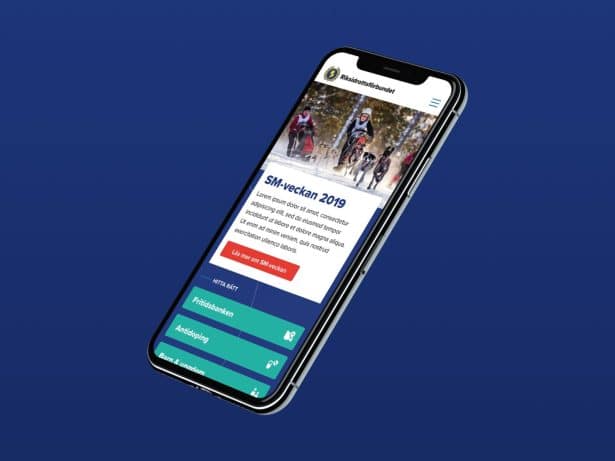Writing a great article about how to write a great article. It’s every writer’s nightmare. But here we are. So how do you write something your audience genuinely wants to read? Let’s break it down - step by step.
How do you even start?
If you're reading this, you probably write - or you're about to start. Either way, you’ve likely felt the dread of seeing that blank page and a blinking cursor. The anxiety is real.
The best tip to get started? Just start. Lower your guard. Try to write something your audience relates to (like the irony of writing about writing). But before you start typing away, there are a few key things to check off - starting with your audience.
Step 1: Know your audience
It doesn’t matter how well you write if you don’t know who you’re writing for. A great article begins with understanding your reader. What do they need? What keeps them up at night? What do they find interesting, useful, or annoying?
How to get to know them:
- Hang out where they hang out
Browse forums, groups, and communities. Platforms like Facebook, Reddit, and LinkedIn are often full of gold mines - real discussions, frustrations, and questions from your audience. - Talk to them
Do you know colleagues, followers, or friends who fit your target audience? Ask what they need help with, what annoys them in the content they consume, and what they actually enjoy.
Use AI as a research tool
AI tools like ChatGPT are great for gathering rapid audience insights. For instance, if your article is about writing articles, your target is likely writers. Prompt the AI like this:
“I'm trying to understand my audience: writers, copywriters, and web editors - especially those who write web articles. What are their needs, challenges, and interests when it comes to article writing?
Please specify:
- What worries them the most in their role?
- What’s their biggest obstacle when writing?
- What are they searching for to improve or solve their challenges?
- Which content engages them - particularly around writing?
- What mistakes do they try to avoid?
You can also ask AI where your target audience hangs out online - research layered on research. Example prompt:
My target audience is writers, copywriters, and web editors - people who write articles for the web. Where are they active online? Where can I learn more about them and their interests?"
Step 2: Choose a relevant topic
Once you understand your audience’s needs, topic selection gets easier. But also be a bit selfish - why are you writing this article?
- Looking to drive traffic? Choose something people are actually searching for. Do keyword research.
- Want to educate or inform? Focus on a common question or problem your audience faces.
- Looking to build authority? Share insights or angles within a niche topic.
- Aiming to sell? Highlight a problem your product or service solves.
A good article is a win–win—valuable for readers and meaningful for you.
Step 3: Research with intention
Writing is easier when you know your topic. But also research what’s missing in conversations already out there.
Ways to level up your research:
- Look for gaps in top-ranking articles
- Dive into forums for unfiltered insights
- Bring your own examples and experiences
Use AI in your research process
AI can give you quick insights, new angles, and identify common mistakes or questions around your topic. For example, try a prompt like:
“Give examples of common pitfalls writers face when crafting articles, and suggest how to avoid them.”
Please note that AI's responses may contain factual errors. Always review the information.
Step 4: Outline your structure
With your audience clear and a topic in mind, fight the blank page with an outline skeleton:
- Start with a working title (doesn’t have to be final)
- List your subheadings
- Add bullet ideas or questions under each section
- Gather links, stats, or quotes you’ll need
Need a headstart? Ask AI to build the outline:
"Create an article outline for “How to write a great article.” Include headings, subheadings, and key points for each section, structured step-by-step."
Step 5: Embrace messy drafts
Writer’s block? Remember, it doesn’t need to be perfect. Write poorly. Make mistakes. Skip parts. Then revisit. The polish comes later.
Step 6: Write well
You’ve got a draft. Now sharpen it. Long doesn’t have to be bad - just make it enjoyable and easy to follow:
- Hook your reader with a compelling intro—pose a question, share a relatable problem.
- Write conversationally - ditch jargon and overcomplicated phrasing.
- Keep sentences and paragraphs short - brevity = readability.
- Use headings for skimmability - allow readers to scan and still want to dive in.
- Give readers a break with bullet points, pull quotes, or visuals.
- Be concrete - ditch fluff, use examples.
- Read it aloud - if it trips you up, rewrite it.
- End clearly - summarize, offer direction, don’t leave your reader hanging.
Use AI to sharpen your writing - not replace it
AI tools can help you generate content fast. Really fast. But the downside? It often ends up sounding generic, flat, or unlike you. That’s why AI should be your sidekick - not your ghostwriter.
Use it to get unstuck, improve phrasing, or polish your draft. Want an extra pair of eyes? Ask your AI tool to proofread or suggest stronger formulations. Have a documented tone of voice? Paste it in and prompt the AI to align your copy with your brand personality.
Let AI assist - but keep your voice in the lead.
Step 7: Write a strong headline
Yes, many start headlines first - but they’re often the first which block flow. Start with a simple placeholder and refine it at the end. Ask yourself: what makes someone want to read? Can you weave in a key phrase?
You can use AI at this stage:
“Suggest 10 clickable headlines that include the keyword [X] for this article: [paste article text]”
Step 8: Optimize for SEO
Done writing? Great. To help people actually find the article:
- Include your keyword in the heading and title
- Create a concise, clickable meta description
- Keep the URL clear and keyword-friendly
- Add alt text to images for better indexing
AI can help here too:
“Optimize this article for SEO without sacrificing readability: [paste article text]”
From a blank page to a read article
You made it to the end of this guide on how to write a great article. Phew - for the writer, yes. But even better for you. Now you have the tools to get started, finish with purpose, and really connect with your audience.
And remember - writing a great article doesn’t begin with perfect phrasing. It begins with knowing your audience. Choose a relevant topic, build clear structure, and just start writing. Good luck!


